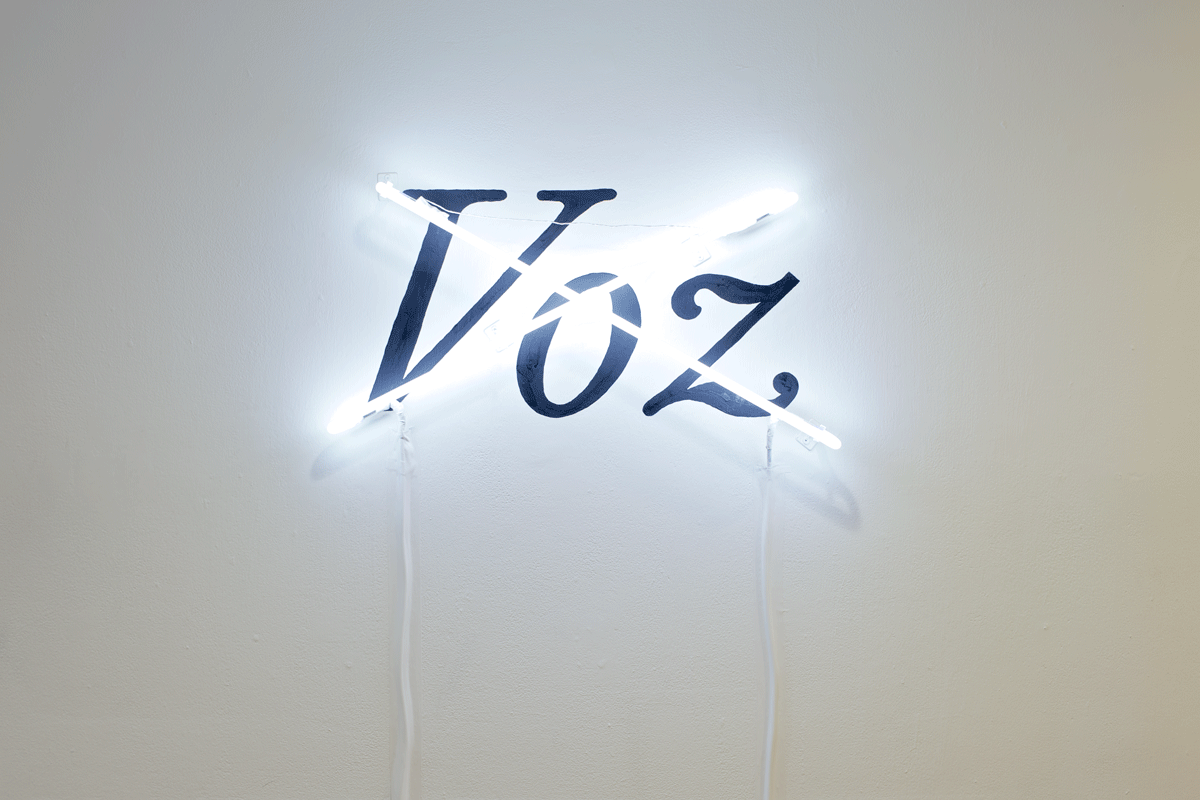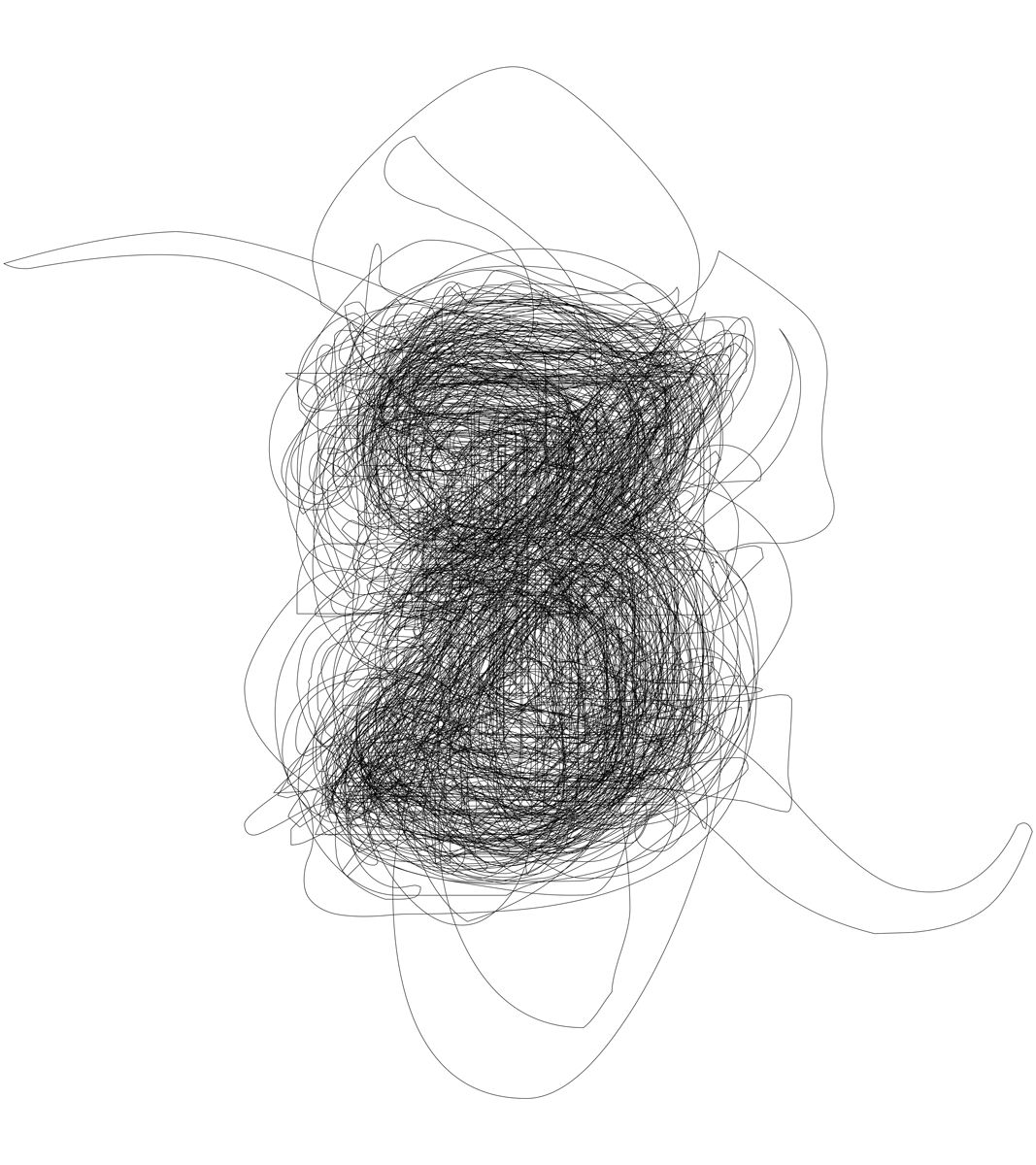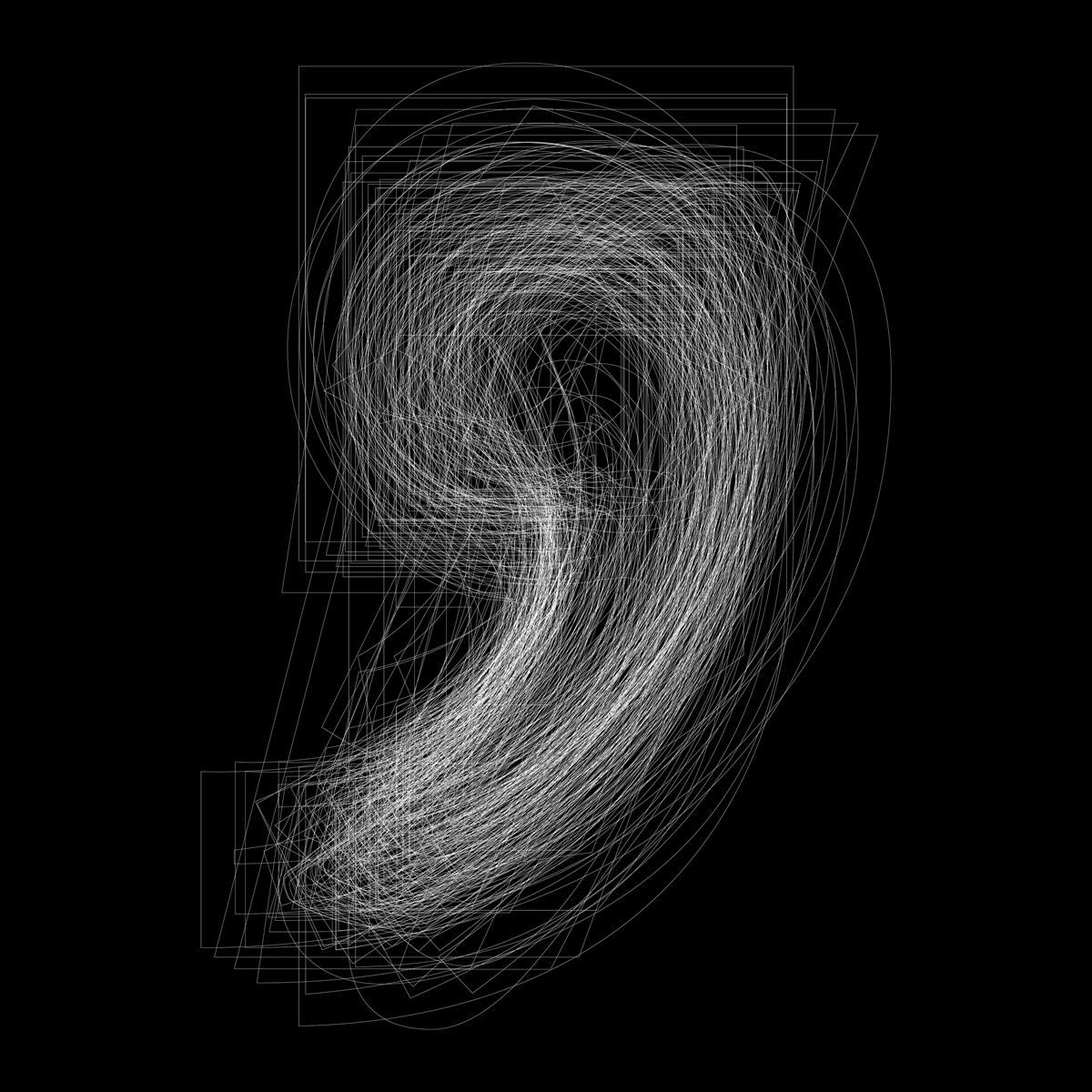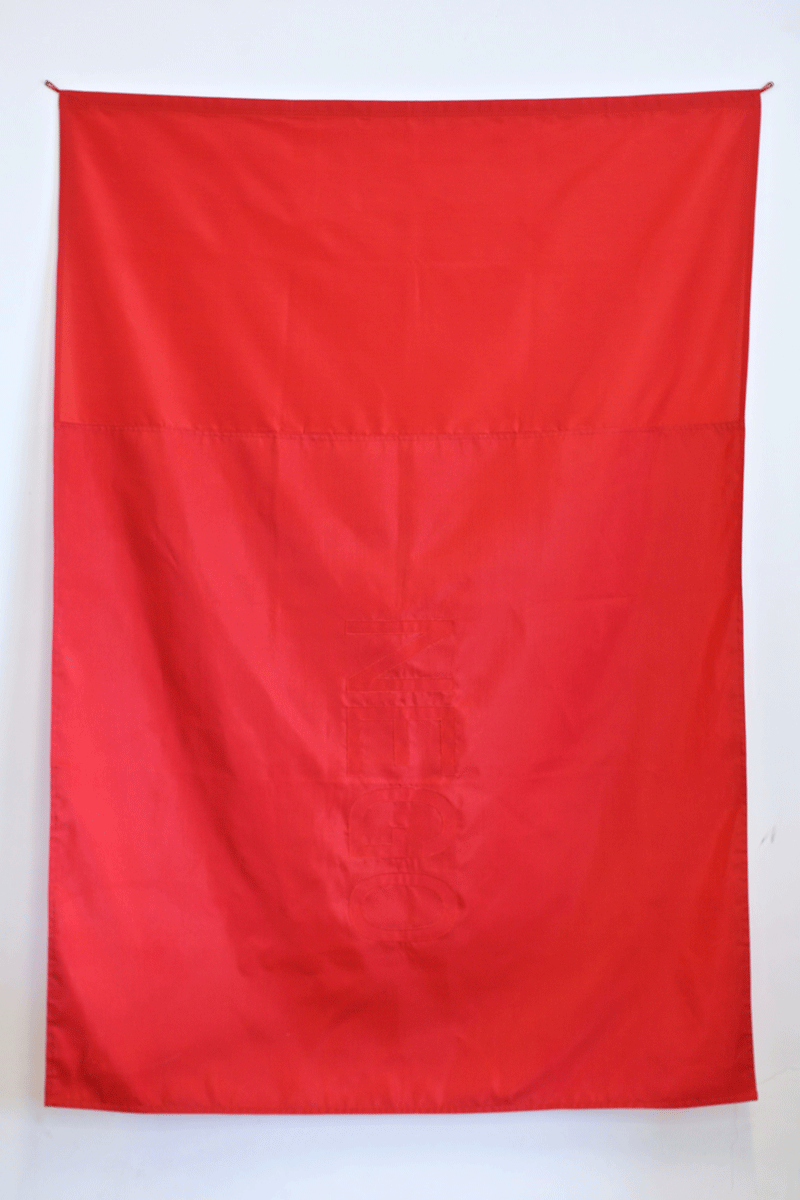
“Voz,” (2012). Installation view. dimensions VARY. Courtesy the artist, Galeria Vermelho, São Paulo, and Y Gallery, New York CITY.

“Broken Language,” (2013). Hahnemühle Photo Rag 308g paper, Ultrachrome K3 pigment ink vivid magenta, wood cachet dyed in graphite, transparent anti-reflective glass TruVue with 70% UV protection. Each image is 82.5 x 82.5 centimeters, framed. Courtesy the artist, Galeria Vermelho, São Paulo, and Y Gallery, New York CITY.

“Broken Language,” (2013). Hahnemühle Photo Rag 308g paper, Ultrachrome K3 pigment ink vivid magenta, wood cachet dyed in graphite, transparent anti-reflective glass TruVue with 70% UV protection. Each image is 82.5 x 82.5 centimeters, framed. Courtesy the artist, Galeria Vermelho, São Paulo, and Y Gallery, New York CITY.

“Sigh and Silence,” (2011). Hahnemühle Photo Rag 308g paper, Ultrachrome K3 pigment ink vivid magenta, digital inkjet print, Hahnemühle Photo Rag 380g paper, pigmented Ultrachrome K3 ink vivid magenta, ebanizada black acrylic lacquer, black plaid dust, cachet wood dyed black with acrylic varnish, black pigment, transparent anti-reflective glass TruVue imported with 70 % UV protection, anti-reflex TruVue glass with 70% UV protection. 82.5 x 82.5 centimeters. Courtesy the artist, Galeria Vermelho, São Paulo, and Y Gallery, New York CITY.

“Sigh and Silence,” (2011). Hahnemühle Photo Rag 308g paper, Ultrachrome K3 pigment ink vivid magenta, digital inkjet print, Hahnemühle Photo Rag 380g paper, pigmented Ultrachrome K3 ink vivid magenta, ebanizada black acrylic lacquer, black plaid dust, cachet wood dyed black with acrylic varnish, black pigment, transparent anti-reflective glass TruVue imported with 70 % UV protection, anti-reflex TruVue glass with 70% UV protection. 82.5 x 82.5 centimeters. Courtesy the artist, Galeria Vermelho, São Paulo, and Y Gallery, New York CITY.

“Paraíba,” (2013). Red fabric, red thread, polyester ropes. 63 x 44 inches. Courtesy the artist, Galeria Vermelho, São Paulo, and Y Gallery, New York CITY.
[](#)[](#)
Maurício Ianês
I Can’t Hear You. Maybe Spit Out the Ink?
Derrida wrote about sous rature, which roughly translates to “under erasure.” The word “love,” for example, can be used many different ways. You can love your dog. You can love your spouse. You can love that sandwich you’re eating. Postmodern theorists, in protest of the many meanings attributed to this single word, will write, “I love you.” The word itself is necessary, but it’s crossed out to simultaneously demonstrate its inadequacies.
In New York’s Y Gallery, São Paulo-based artist Maurício Ianês has painted the word “Voz” (voice) and crossed it out with an X. In a piece called “The Writer,” Ianês fills his mouth with black ink as observers are asked to shout out their favorite words. Ianês then translates these words to Portuguese and paints them on the wall with his tongue. He hopes to, quite literally, embody speech, translating words to action, and confront the public with their ideas about the meaning of language.
Ianês began receiving international recognition after his performance “A Bondade de Estranhos” (“The Kindness of Strangers”) at the 2010 Bienal de São Paulo. He began the piece by standing still, naked, in the middle of a room. Over the course of the next several days, he remained in the pavilion, relying completely on donations of food and clothing from members of the public in order to survive. In many of Ianês’ works, he is central to the piece, even when it entails substantial discomfort.
“I see my performances mostly as creating a situation where relationships can be tested or developed. I want to live that, I want to experience it…The body was never my subject \[in “The Kindness of Strangers”\]. In those works I expose myself to hard situations; it’s part of the work. It’s not really an issue for me…I’ll do whatever it takes to discuss with the public what I wish to discuss. As much of my work is about the embodiment of language, the body inevitably plays an important part.”
For years, Ianês has worked as the stylist for designer Alexandre Herchcovitch. He considers the work separate but equal, and bristles at the idea that it somehow makes him less of an artist.
“For me, it’s not hard to go from fashion to art and art to fashion. I try to protect myself and not get too much into the business part…I believe that fashion is a part of human culture just as much as art…I don’t really pay a lot of attention to critics—I think people that do that \[criticize\] are blind to what goes on in the art world. I protect my work in the fashion world and work in the art world very well against being something else…I try to treat my art and fashion work with the same seriousness.”
The response of the public is central to much of his work and can affect it in ways Ianês did not imagine (the girl whose “donation” to Ianês was an offer to sleep with him. He demurred). With so much agency invested in the experience of the spectator, it raises the question of what Ianês wants people to walk away with.
“Basically, I don’t want them to walk away. It is very important for me that, even though I have things I want to say, they present themselves to the spectator as an open field, or zero level. I hate the word ‘interactive;’ I don’t like to think of it that way. I prefer to call it collaborative action. The performances wouldn’t happen without the active public. I don’t want them to walk away; I want them to join me in the construction of a work or a situation. I want them to experience the same things that I do.”
